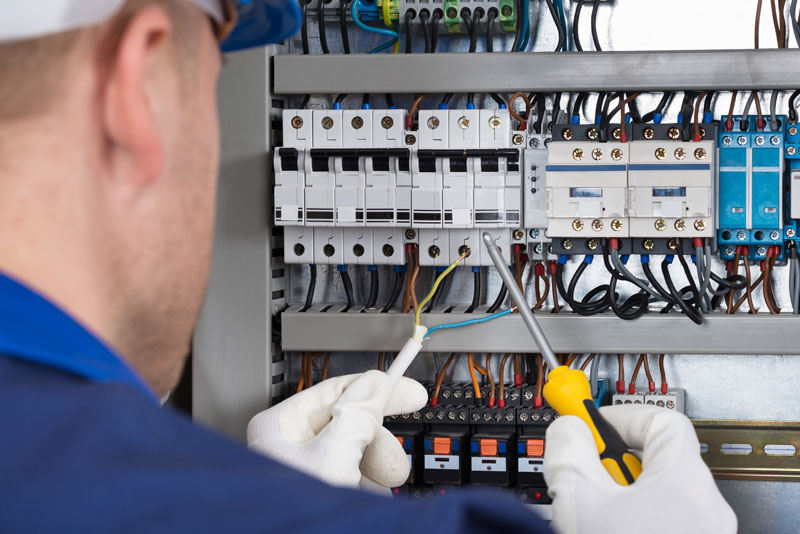Advanced BRE Automation Australia: Transforming Your Automation Needs
Advanced BRE Automation Australia: Transforming Your Automation Needs
Blog Article
The Ultimate Guide to Electrical Installment: Tips and Techniques for a Safe and Efficient Home Circuitry System
In the realm of home maintenance, few aspects are as essential yet frequently forgotten as the electrical wiring system. By exploring the subtleties of electric safety and security actions and energy-saving practices, this detailed guide will certainly lose light on the details of home electrical wiring, empowering individuals to take charge of their family's electric infrastructure.
Recognizing Electrical Security Procedures
To make certain the safety of both individuals and residential property, understanding and executing appropriate electrical safety actions is extremely important in any type of home wiring project. It is vital to conduct a thorough inspection of the electrical system before beginning any kind of wiring task to recognize potential threats or concerns that need to be resolved.
In addition, utilizing the appropriate devices and tools is essential for preserving safety and security throughout electrical installments. Shielded handwear covers, voltage testers, and safety glasses are some of the fundamental security equipment that ought to be put on to avoid electric shocks or crashes. It is additionally essential to de-energize circuits before servicing them and to label all circuits and breakers clearly to prevent complication.

Crucial Tools for Home Electrical Wiring
Making sure the correct execution of electric safety and security actions in home electrical wiring tasks includes making use of a particular set of crucial devices developed to promote the installment procedure properly and securely. Some of the trick devices needed for home circuitry projects consist of a voltage tester for checking online cables, wire pole dancers for eliminating insulation from wires, a cable cutter for specifically cutting cables to length, a screwdriver set for protecting electric elements, electric tape for insulation and securing links, a cable television ripper for stripping cable sheathing, and a multimeter for measuring voltage, existing, and resistance.
Step-by-Step Electrical Installment Guide
Beginning an electrical setup project requires precise preparation and adherence to safety and security guidelines. Prior to starting any work, ensure you have a comprehensive plan describing the design of the electrical system, consisting of the placement of outlets, buttons, and fixtures. Think about the power demands of each gadget to figure out the suitable cable scale and breaker dimensions.
The primary step in the setup procedure is to shut off the power supply to the area where you will certainly be functioning. Utilize a voltage tester to confirm that the circuits are de-energized before touching any kind of cables. Next off, very carefully eliminate existing fixtures or electrical outlets and disconnect the cords.
When installing new wiring, run wires with wall surfaces and ceilings, protecting them in position with suitable installations. Comply with neighborhood building regulations and producer instructions for proper cable installment and connections. BRE Electrical Melbourne. Make certain to label cables for easy identification and future upkeep

Troubleshooting Common Circuitry Issues
Having actually completed the setup procedure as detailed in the previous subtopic, fixing common wiring problems is a necessary ability for ensuring the safety and functionality of your electric system. One typical concern is a tripped breaker, usually triggered by overloaded circuits or a short circuit. To troubleshoot this, situate the breaker panel, recognize the tripped breaker by searching for the one not fully in the "on" placement, and reset it by flipping it totally to "off" and after that back to "on." Another common issue is a malfunctioning electrical outlet, characterized by no power or periodic power supply. Guarantee the electrical outlet is not controlled by a button, then make use of a voltage tester to inspect for power. If there is no power, turn off the circuit, inspect the electrical wiring connections for any loosened or damaged cords, and replace the outlet if required. Constantly flickering lights can indicate loose circuitry connections or an overloaded circuit. To resolve this, check and tighten all wire connections in the affected components and switches and redistribute the load on the circuit to balance the electric demand. Routinely inspecting and immediately attending to these typical wiring concerns will keep the security and efficiency of your home electrical system.
Tips for Energy-saving Electrical Solutions
For optimum energy efficiency in electrical systems, applying wise methods and utilizing energy-saving technologies is paramount. One key pointer for accomplishing an energy-efficient electric system is to upgrade to LED illumination. LED light bulbs take in dramatically much less power than typical incandescent light bulbs and have a longer life expectancy, making them an affordable choice in the lengthy run. Additionally, installing programmable thermostats can help control heating and cooling systems, minimizing BRE Services power waste when nobody is home. An additional strategy is to invest in energy-efficient appliances that are ENERGY celebrity certified, ensuring they satisfy high criteria for power effectiveness. Appropriate insulation and securing of windows, doors, and electric outlets can also stop power loss, ultimately minimizing the workload on electrical systems. Lastly, think about integrating renewable resource sources like photovoltaic panels to additional decline reliance on conventional power grids. By incorporating these energy-efficient ideas and innovations, homeowners can not just conserve cash on their electrical energy expenses but additionally lower their ecological effect.
Verdict
To conclude, executing appropriate safety and security steps, making use of important tools, following a step-by-step installation guide, repairing typical issues, and including energy-efficient suggestions are vital for a risk-free and efficient home wiring system. By sticking to these methods, home owners can make sure the durability and performance of their electric setups. It is necessary to focus on safety and security and effectiveness when it concerns electric work in order to stop possible risks and to maintain a dependable electrical system in the home.
Report this page